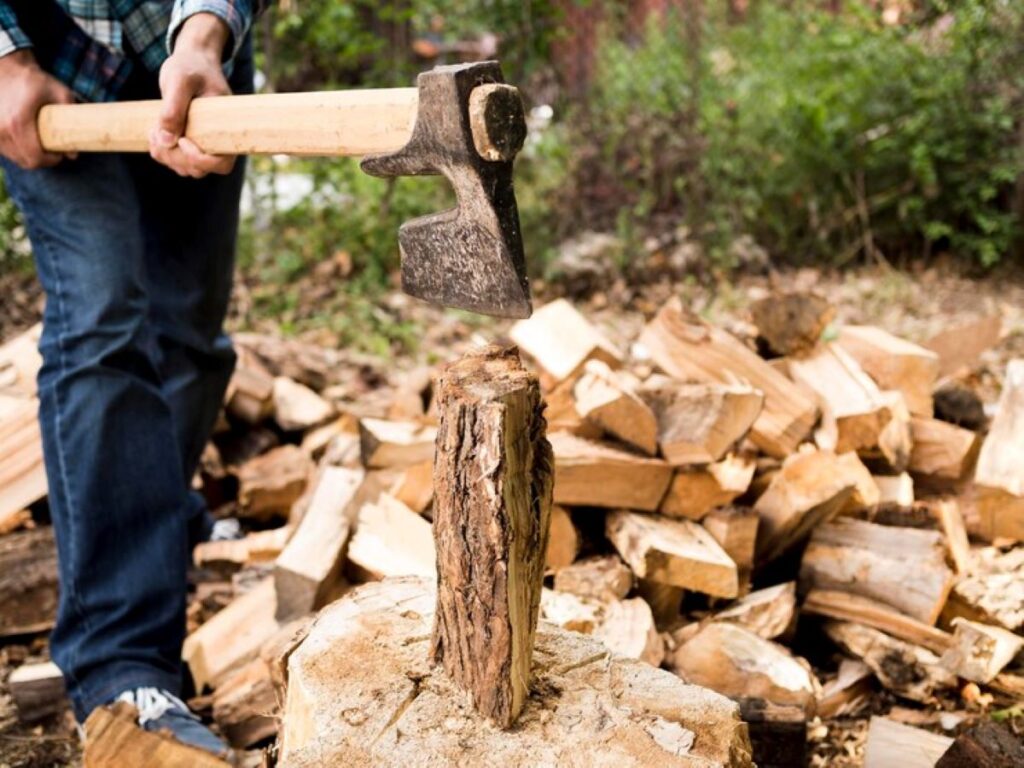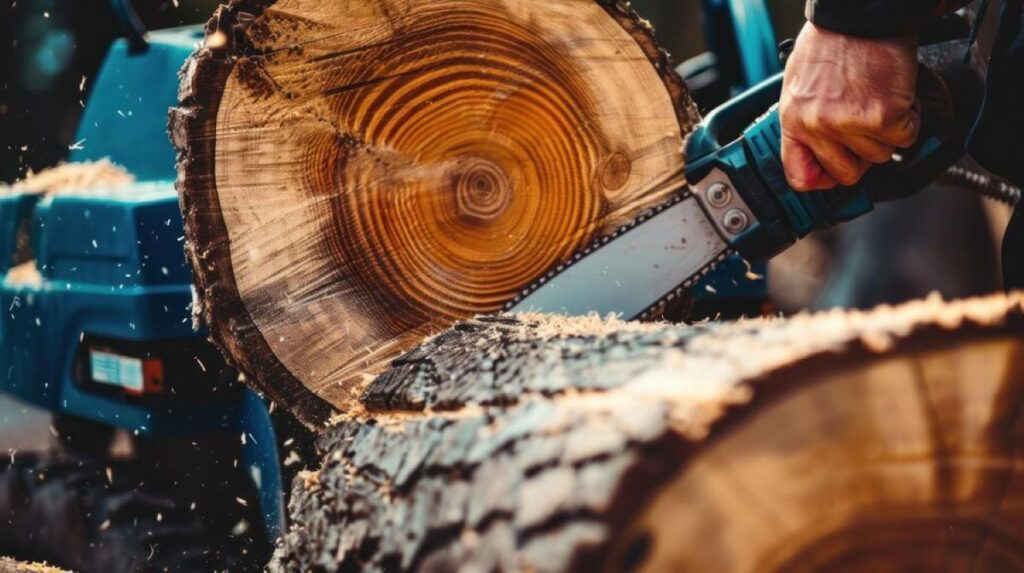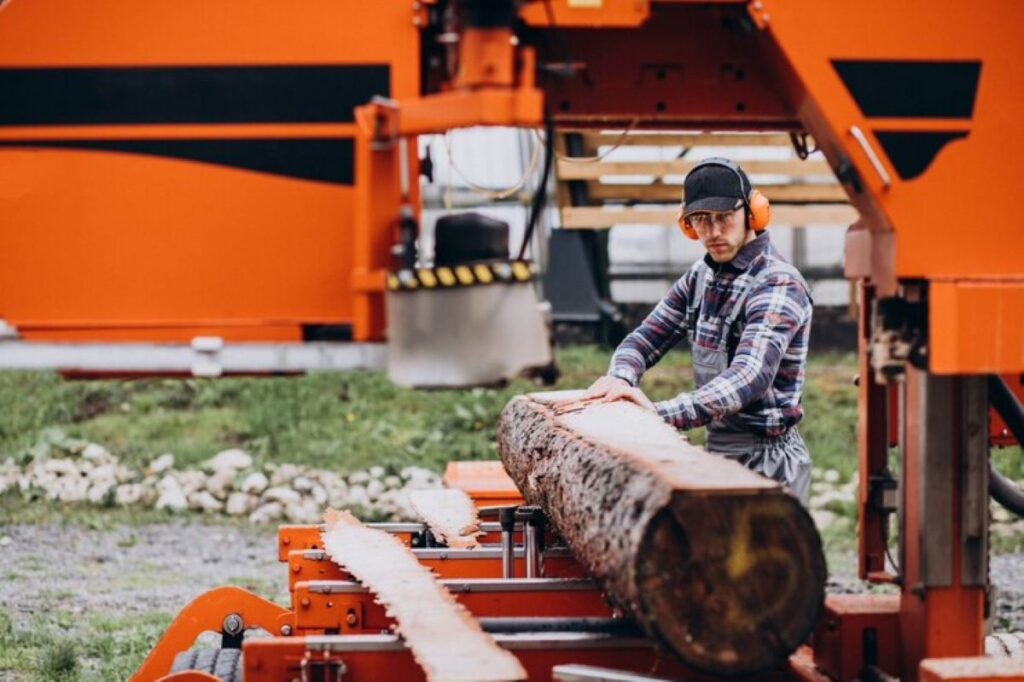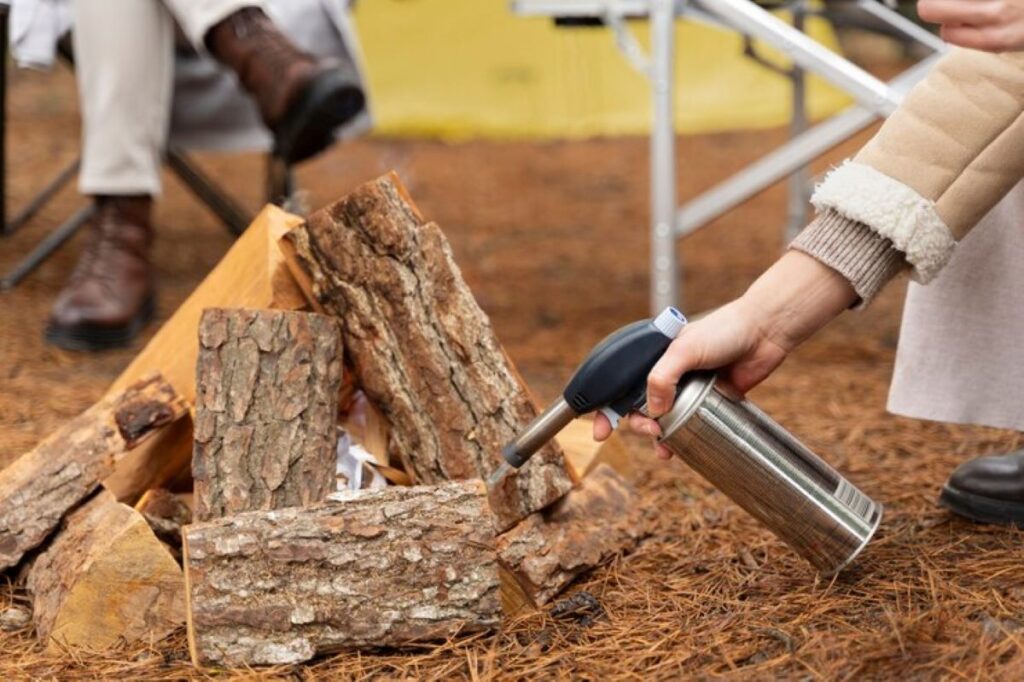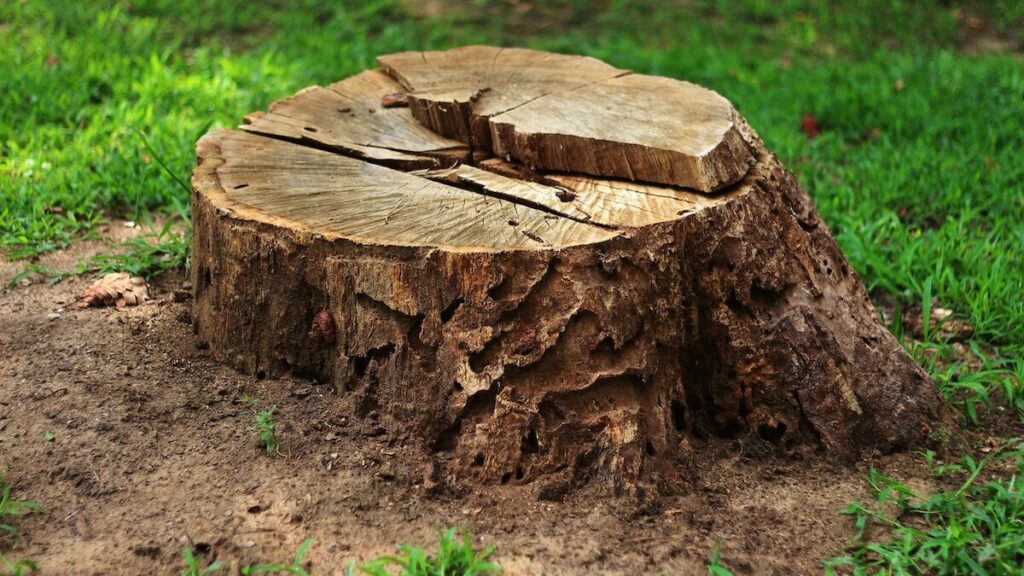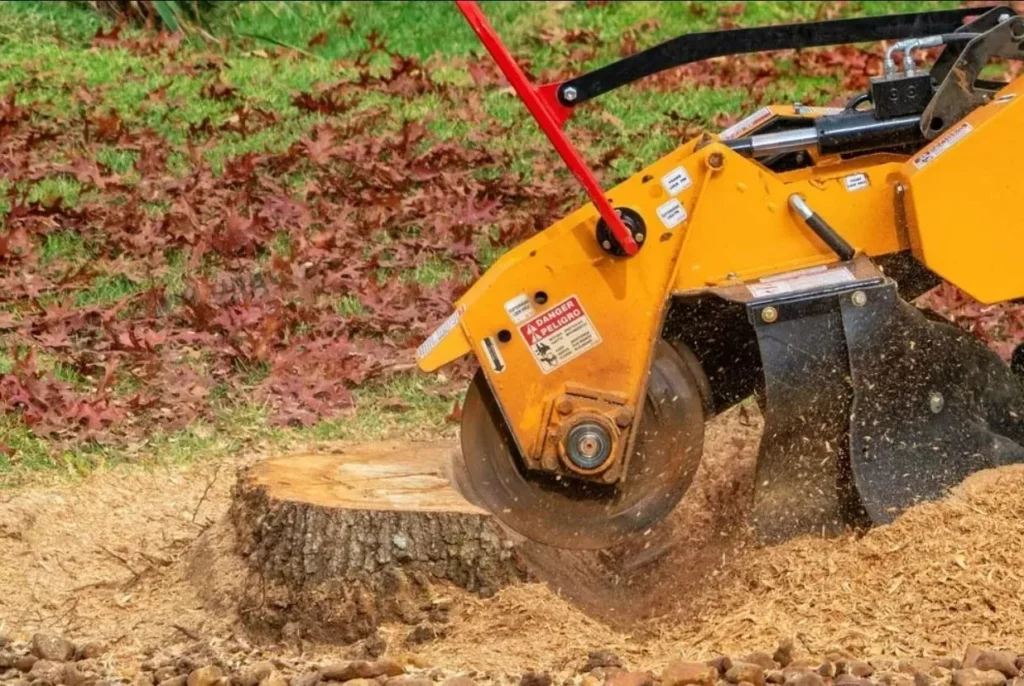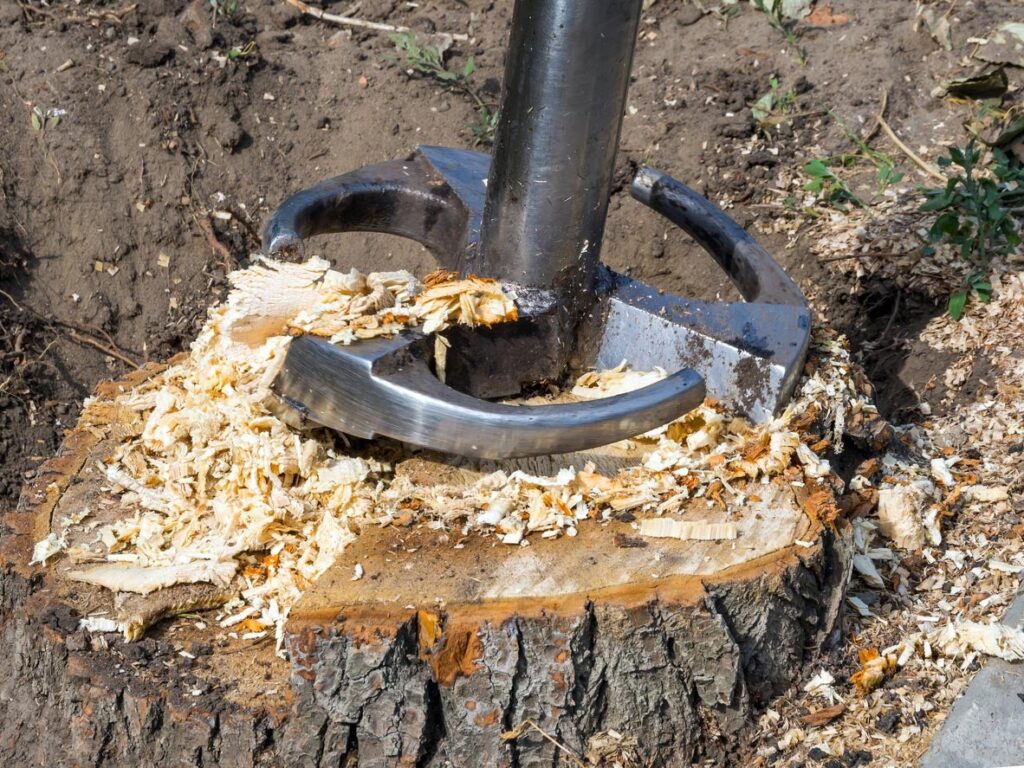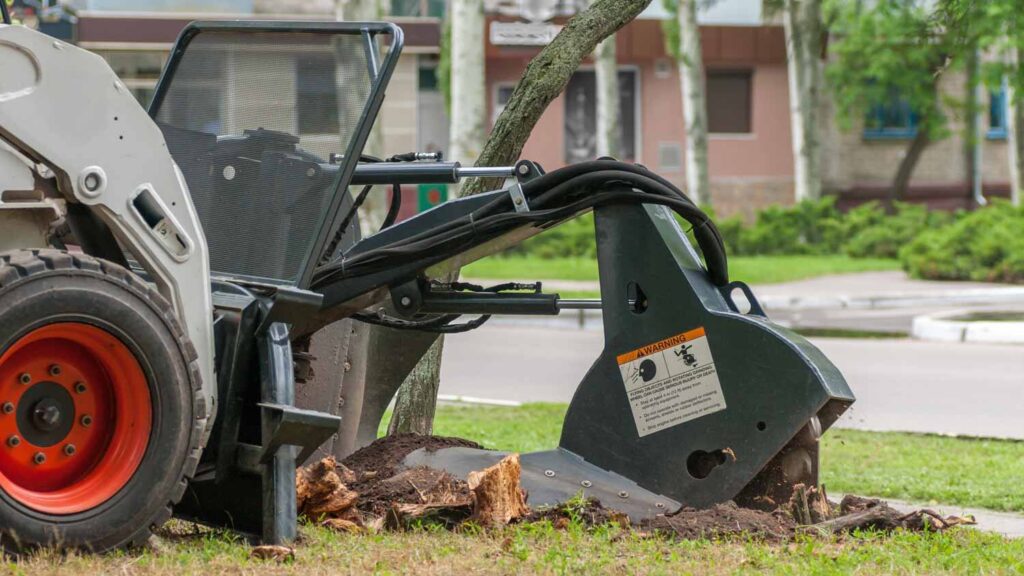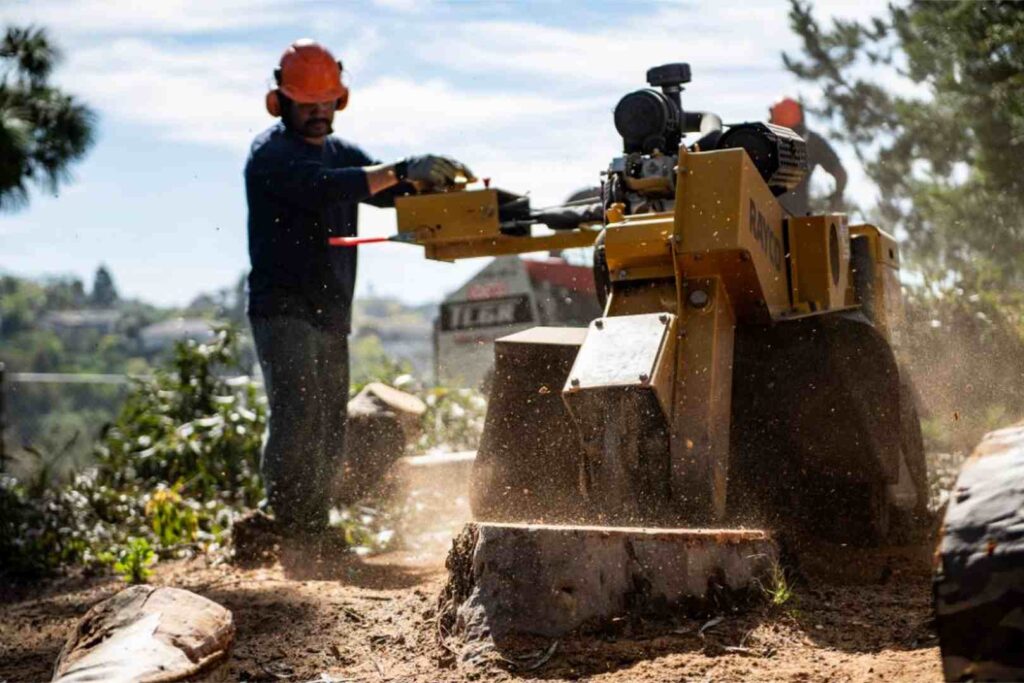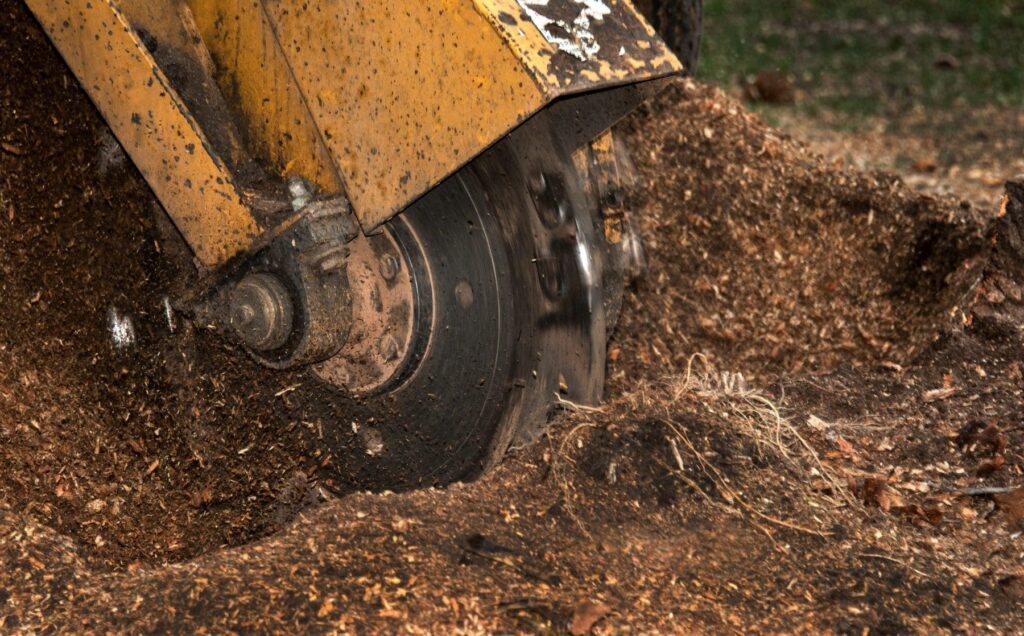Removing a tree from your yard can be a challenging endeavor, and one significant leftover obstacle is the tree stump. Stump grinding is a highly effective method for eliminating stumps without the extensive roots left behind that can disrupt your landscape. This article will guide you through the essentials of stump grinding, the process involved, and considerations for yard maintenance afterward.
Understanding the Basics of Residential Stump Grinding
Before embarking on your residential stump grinding journey, it’s crucial to understand the fundamentals of stump grinding. It’s not just about eliminating an eyesore; it’s about ensuring healthy yard management and aesthetics.
What is Stump Grinding?
Stump grinding is a method where a tree stump is mechanically reduced to mulch using specialized equipment, typically a stump grinder. This process not only removes the visible portion of the stump but also grinds down the roots embedded in the ground. Unlike stump removal, which involves excavating the entire root system, stump grinding offers a less invasive and quicker option.
Why is Stump Grinding Necessary?
Stump grinding is necessary for several reasons, both practical and aesthetic. Firstly, stumps can create hazards in your yard—they may cause trips and falls. Secondly, they can attract pests such as ants, termites, and other insects, posing a risk to other trees and plants. Additionally, stumps consume valuable space in your garden, detracting from its aesthetic appeal and usability. Grinding the stump ensures you have a clear and safe area for planting or other outdoor activities.
Moreover, stump grinding can significantly enhance the overall health of your landscape. When a stump is left to decay, it can lead to fungal infections that may spread to healthy plants nearby. By grinding the stump, you not only eliminate the risk of disease but also create nutrient-rich mulch that can be beneficial for your garden. This mulch can be spread around existing plants to help retain moisture and suppress weeds, promoting a healthier and more vibrant garden environment.
Additionally, stump grinding can be an environmentally friendly choice. The mulch produced from grinding can be repurposed in various ways, such as for landscaping projects, pathways, or even as a natural fertilizer. This sustainable approach not only minimizes waste but also contributes to the overall ecosystem of your yard. By embracing stump grinding, homeowners can take an active role in maintaining their outdoor spaces while promoting a healthier environment for all living organisms within it.
The Stump Grinding Process
Understanding the stump grinding process helps you prepare for the task, whether you plan to do it yourself or hire a professional. Familiarity with the steps involved will ensure a smoother operation.
Equipment Needed for Stump Grinding
Before you start, having the right equipment is essential. The primary tool required is a stump grinder, which can be rented or purchased from equipment stores. Here are some other tools and materials you might need:
- Protective eyewear and gloves
- Hearing protection
- A shovel for clearing debris
- Rake for smoothing the area afterward
- Soil or mulch to fill the hole left behind
Ensuring you have all the tools on hand will prevent delays and help maintain safety throughout the grinding process. Additionally, it’s wise to wear sturdy, non-slip footwear to provide traction and protect your feet from any falling debris. If you’re new to using heavy machinery, consider watching instructional videos or reading the user manual for the stump grinder to familiarize yourself with its operation and safety features.
Step-by-Step Guide to Stump Grinding
Here is a simplified outline of the steps involved in stump grinding:
- Preparation: Clear the area around the stump by removing rocks, soil, and debris.
- Mark the Area: Use spray paint to mark the desired grinding depth, usually a few inches below ground level.
- Start the Grinder: Turn on the stump grinder and position it over the stump, starting at one edge.
- Grind the Stump: Gradually lower the grinder and move it side to side, grinding a few inches at a time until the stump is sufficiently ground down.
- Clean Up: Once done, clear away the mulch and debris, ensuring the area is safe and tidy.
Following these steps will enhance efficiency and effectiveness, leading to a successful stump grinding operation. It’s important to note that the grinding process can produce a significant amount of wood chips and dust, so it’s advisable to inform neighbors beforehand, especially if they have allergies or sensitivities. Furthermore, depending on the size of the stump and the type of wood, the grinding process may take longer than expected, so patience is key. After the grinding is complete, consider using the wood chips as mulch in your garden or landscaping, as they can help retain moisture and suppress weeds.
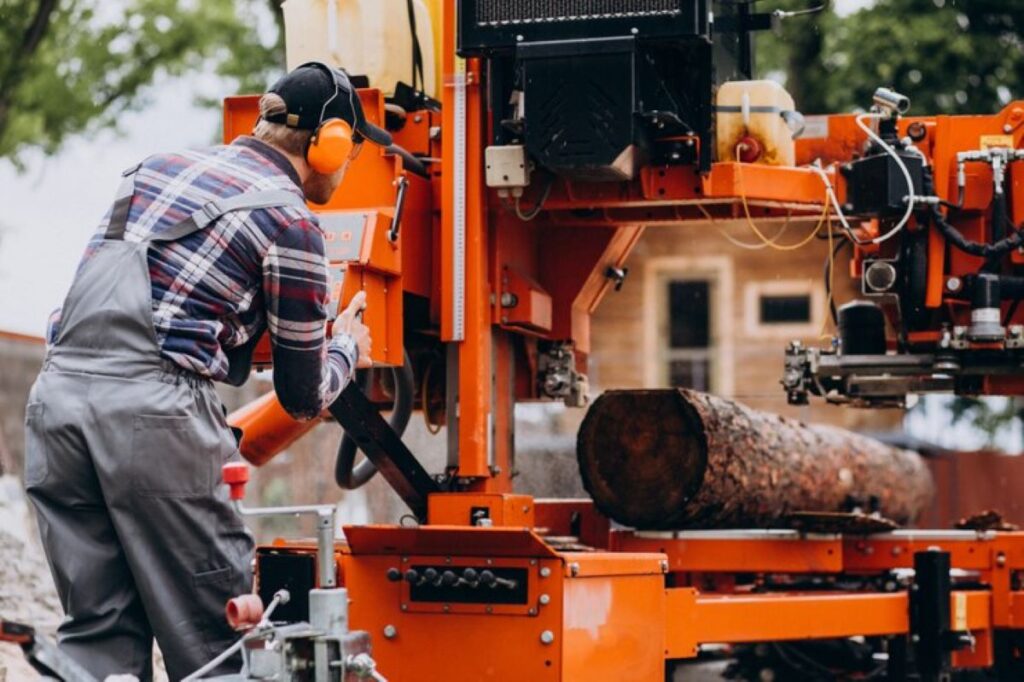
Safety Measures During Stump Grinding
Stump grinding can pose risks, so implementing proper safety measures is vital for both amateurs and professionals. Understanding safety protocols can help you avoid injuries and accidents.
Protective Gear for Stump Grinding
When operating a stump grinder, safety gear is non-negotiable. Here’s a list of essential protective gear:
- Hardhat to protect your head
- Safety goggles to shield your eyes from debris
- Ear protection from the loud noise of the grinder
- Heavy-duty gloves to protect your hands
- Steel-toed boots for foot protection
This gear is crucial for minimizing the risk of injury, allowing you to focus on the task at hand. Additionally, wearing high-visibility clothing can enhance your safety by making you more noticeable to others in the vicinity. This is particularly important if you are working in a busy area or near roadways, where the potential for accidents increases. The right gear not only protects you physically but also instills a sense of confidence as you tackle the job.
Precautions to Take Before Grinding
Taking the right precautions before starting the grinding process will enhance safety. Consider the following:
- Inspect the area for potential hazards, such as underground utilities or other obstacles.
- Ensure that children and pets are kept at a safe distance from the work area.
- Read the stump grinder’s manual and familiarize yourself with its features and controls.
By following these precautions, you can create a safer working environment. It’s also wise to inform any nearby neighbors about your stump grinding plans, as the noise and activity can be disruptive. Furthermore, having a first aid kit readily available can be a lifesaver in case of any unforeseen incidents. Always have a plan in place for emergencies, including knowing the quickest route to the nearest medical facility. This proactive approach can make a significant difference in ensuring that everyone remains safe during the grinding process.
Hiring Professional Stump Grinding Services
If the idea of manual grinding is daunting, or you have a large stump, hiring a professional may be the best option. This can save time and guarantee effective results.
Benefits of Hiring a Professional
There are numerous advantages to hiring professionals for stump grinding:
- Expertise: Professionals have the training and experience to handle stumps of various sizes and complexities.
- Safety: They are equipped with the necessary gear and tools, ensuring the job is done safely.
- Efficiency: Professionals can complete the task quickly, allowing you to get back to enjoying your yard.
- Proper Disposal: They can offer options for disposing of the wood chips and leftover debris in an environmentally friendly way.
These benefits can make hiring a professional stump grinder a worthwhile investment. Furthermore, professional services often come with a guarantee of satisfaction, which means if the job isn’t done to your liking, they will address any concerns without additional charges. This peace of mind is invaluable, especially for homeowners who may be anxious about the quality of work.
What to Look for in a Stump Grinding Service
When choosing a stump grinding service, keep the following factors in mind to ensure you select a reliable provider:
- Check for insurance and certifications—to ensure they are professionally qualified.
- Look for positive reviews or testimonials from previous customers.
- Request detailed quotes that outline all potential costs.
- Inquire about the equipment they use to ensure it’s modern and well-maintained.
Being thorough in your research can lead to a successful partnership with a stump grinding service. Additionally, it’s beneficial to ask about their experience with specific types of trees, as different species can present unique challenges during the grinding process. A knowledgeable provider will not only be able to grind the stump but also offer insights into preventing future stump growth and maintaining the health of your landscape.
Post-Grinding Yard Maintenance
Once the stump is gone, your yard may require some maintenance to ensure it looks great and feels functional. Knowing how to handle this phase will set you up for success.
Cleaning Up After Stump Grinding
After the stump grinding process, there will be plenty of wood chips and debris to manage. Here’s how to clean up effectively:
- Use a rake to gather large piles of chips into manageable areas.
- Consider reusing the mulch around your garden or flower beds.
- Dispose of remaining debris according to your local waste regulations.
This cleanup enables you to maintain a tidy outdoor space and may provide material for landscaping. Additionally, it’s essential to assess the surrounding area for any remaining roots that could affect future planting or landscaping efforts. Removing these roots can prevent potential issues with soil stability and plant growth.
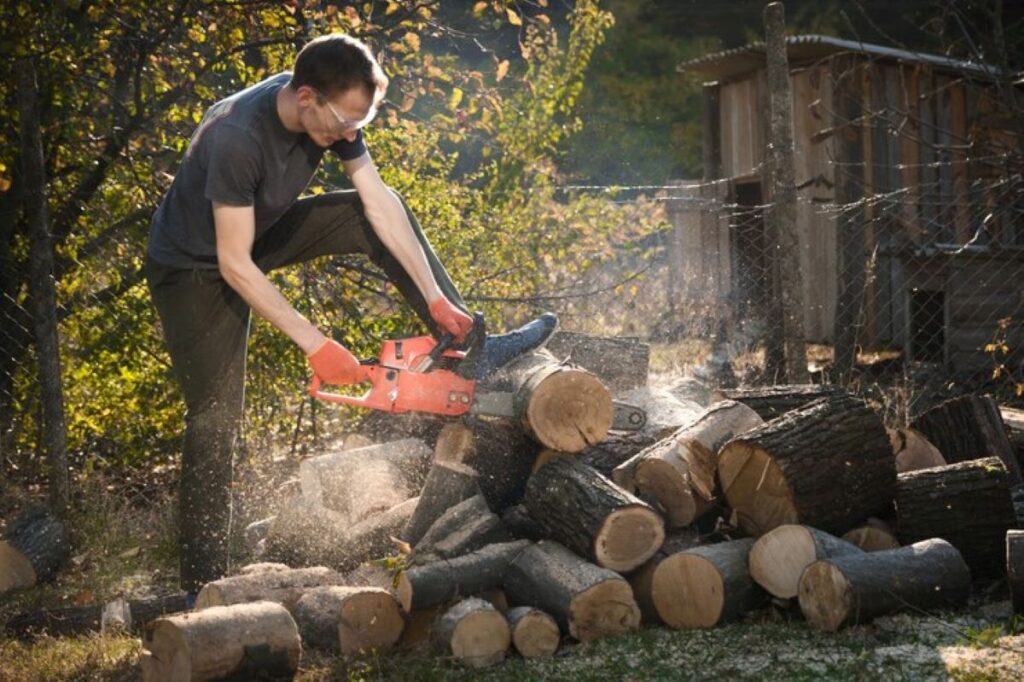
Landscaping After Stump Removal
The area left behind after grinding can be transformed beautifully. Some options for landscaping include:
- Filling the hole with soil, creating a planting area for flowers or grass.
- Constructing a garden bed around the area to enhance your landscape.
- Designing other features like decorative stones or a small seating area.
Planning your garden around the former stump site can rejuvenate your yard, turning a previously hindered space into a vibrant feature. You might also consider planting native species that thrive in your local climate, as they require less maintenance and support local wildlife. Incorporating perennials can provide year-round beauty, while annuals can add seasonal color and variety.
Moreover, adding elements such as a birdbath or a small fountain can attract wildlife and enhance the overall ambiance of your garden. These features not only beautify the space but also create a serene environment for relaxation and enjoyment. By thoughtfully designing your landscape, you can transform the area into a delightful retreat that reflects your personal style and enhances your outdoor living experience.
Related : Stump Grinding Prices: What to Expect from Professional Services

